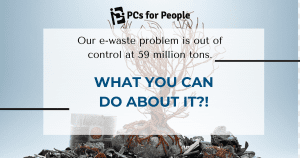 Our electronic devices, such as smartphones, laptops, monitors, TVs, speakers, and personal devices, are getting smaller, slimmer, and lighter each year. These devices have become a part of modern life, and we rely on them heavily. The earliest laptop, the Macintosh PowerBook 100, weighed more than five pounds when it was released in 1991. However, the lightest laptop available in the market today weighs less than two pounds. Similarly, the lightest phone available today weighs just over three ounces, less than a deck of playing cards. As wireless technology advances, we need fewer cords and cables that were once essential for connectivity. The world is moving towards smaller, lighter, and more efficient devices, and it is clear that this trend is here to stay.
Our electronic devices, such as smartphones, laptops, monitors, TVs, speakers, and personal devices, are getting smaller, slimmer, and lighter each year. These devices have become a part of modern life, and we rely on them heavily. The earliest laptop, the Macintosh PowerBook 100, weighed more than five pounds when it was released in 1991. However, the lightest laptop available in the market today weighs less than two pounds. Similarly, the lightest phone available today weighs just over three ounces, less than a deck of playing cards. As wireless technology advances, we need fewer cords and cables that were once essential for connectivity. The world is moving towards smaller, lighter, and more efficient devices, and it is clear that this trend is here to stay.
So why are we generating more metric tons of e-waste than ever before?
Even though our electronic devices are becoming smaller, slimmer, and lighter, we are generating more metric tons of e-waste than ever. This is because we are throwing more and more devices away and upgrading to new ones that are constantly appearing in the market. The electronics industry’s strategy of planned obsolescence, coupled with steadily falling prices for personal technology, is a significant contributor to this.
In 2019 humans generated 59 million U.S. tons of e-waste, more than any other year on record and 21 percent more than we generated just five years ago. Last year’s discarded electronics weighed as much as 350 Queen Mary 2 ocean liners. Shockingly, we produced more than 16 pounds of e-waste for every one of the 7.8 billion people living on Earth. However, the benefits and dangers of the electronics boom are being distributed very unevenly among the human population.
The amount of e-waste we produce is increasing rapidly. The Global E-waste Monitor 2020 report predicts that 2030 the world’s e-waste will reach 74 metric tons – a 100 percent increase in just 16 years. This is due to higher consumption rates of electronic equipment, shorter life cycles, and fewer repair options. The electronics industry’s planned obsolescence strategy and falling prices for personal technology are also significant contributors. We need to be more mindful of our consumption habits and take steps to minimize e-waste.
A 2018 New York Times Magazine article depicted “backyard recyclers.” Workers in India, Indonesia, and Thailand are recovering gold inside circuit boards through dangerous methods without any protection. These workers, many of whom are children, receive low pay and often work without safety gear. Even “ecologically conscious” recyclers have been caught sending electronics overseas to be processed by people working for low wages under hazardous conditions.
So what’s to be done?
Only half of U.S. states have laws regulating e-waste disposal, and no federal law mandating its recycling or restricting its export to developing countries, despite repeated proposals…
Those who regularly need to dispose of their old electronics can select recyclers who have joined the R2-CERTIFIED RECYCLING initiative, which certifies recyclers based on the highest standards of responsible practices. The certification requirements mandate that recyclers cannot export hazardous or illegal e-waste to developing countries, dispose of it in landfills, or recycle it using forced or child labor.
We generate more e-waste than ever before due to the electronics industry’s planned obsolescence and our constant upgrading to new devices. In 2019, we generated 59 million U.S. tons of e-waste, 21 percent more than five years ago. Tech companies must stop planned obsolescence and make it easier to repair devices. As consumers, we need to consider the environmental impact of our actions when upgrading to new devices.
Did you know that PCs for People offers a nationwide service for the free pick up of electronic waste from businesses, educational institutions, and government organizations of all sizes? It’s a great way to dispose of old electronic equipment responsibly while also doing your part to help the environment. Plus, with a convenient pick-up service, it’s easy to get rid of your unwanted electronics without worrying about transportation.



